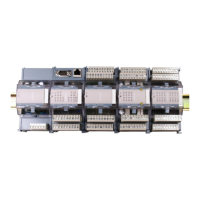Detailed description
2.3 Continuous -path mode
Basic logic functions: Continuouspath Mode, Exact Stop, LookAhead (B1)
Function Manual, 11/2006, 6FC5397-0BP10-2BA0
29
SOFT
With SOFT, the jerk of each axis is limited to its maximum value within the rounding area.
The rounding motion thus generally consists of 3 phases:
• Phase 1
During phase 1, each axis builds up its maximum acceleration. The jerk is constant and
equal to the maximum possible jerk on the respective axis.
• Phase 2
During phase 2, the maximum permissible acceleration is applied.
• Phase 3
During phase 3, which is the last phase, the acceleration of each axis is reduced back to
zero with the maximum permissible jerk (see figure below).
2.3.5 Smoothing the path velocity
Application
In some applications in mold making, especially in the case of high speed cutting, it is
desirable to achieve a constant path velocity.
Response without smoothing
The velocity control function utilizes the specified axial dynamic response. If the programmed
feedrate cannot be achieved, the path velocity is brought to the parameterized axial limit
values and the limit values of the path (velocity, acceleration, jerk). This can lead to repeated
braking and acceleration on the path.
If a short acceleration takes place during a machining function with high path velocity, and is
thus followed almost immediately by braking, the reduction in the machining time is only
minimal. Acceleration of this kind can, however, have undesirable effects if, for example, it
results in machine resonance.
Solution: Smoothing
In some cases, it can therefore be reasonable to sacrifice transient acceleration processes in
favor of a smoother tool path velocity. The following sections describe the conditions and
possible settings to avoid less effective accelerations/decelerations.
Advantages
The following improvements are possible:
• Avoidance of excitations of possible machine resonance due to continuous, transient
braking and acceleration processes (in the area of less IPO cycles).
• Avoiding of constantly varying cutting rates due to acceleration which brings no significant
shortening of the program running time.

